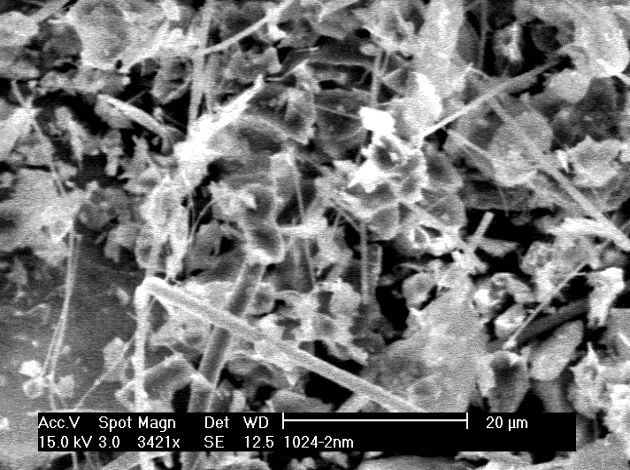
Asbestos is a generic term that is used to describe a variety of natural
hydrous silicate minerals that, upon mechanical processing, separate into
fine fibers. They are usually thin, long and tubular in shape. Their size can
range from 0.2 um to more than 5 um with a length to width ratio of 3 to 1
or longer. There are two fundamental varieties of asbestos: Serpentines
and amphiboles. Serpentine is known as chrysotile and they make up
95% of the asbestos. Amphiboles include five species and their names
and chemical composition are shown in the Table below:
Asbestos variety and their composition
| Variety | Species | Chemical composition |
| Serpentine | Chrysotile | 3MgO.2SiO2.2H2O |
| Amphibole | Anthophyllite | 7MgO.8SiO2.2H20 |
| Amphibole | Amosite | 11FeO.3MgO.8SiO2.2H20 |
| Amphibole | Actinolite | 2CaO.4MgO.FeO. 8SiO2.2H20 |
| Amphibole | Tremolite | 2CaO.5MgO. 8SiO2.2H20 |
| Amphibole | Crocidolite | Na2O.Fe2O3.3FeO. 8SiO2.2H20 |
| |
| |
| |
| |
| |
| |
| |
| |
samples by x-ray powder diffraction (XRD) and scanning electron
microscope attached with an energy dispersive spectrophotometer
(SEM/EDS). XRD is used to identify the type of asbestos mineral present.
SEM/EDS is used to determine the morphology and chemistry of these
minerals. Asbestos is hazardous only when the minerals are present as
minute, cylindrical fibers.

